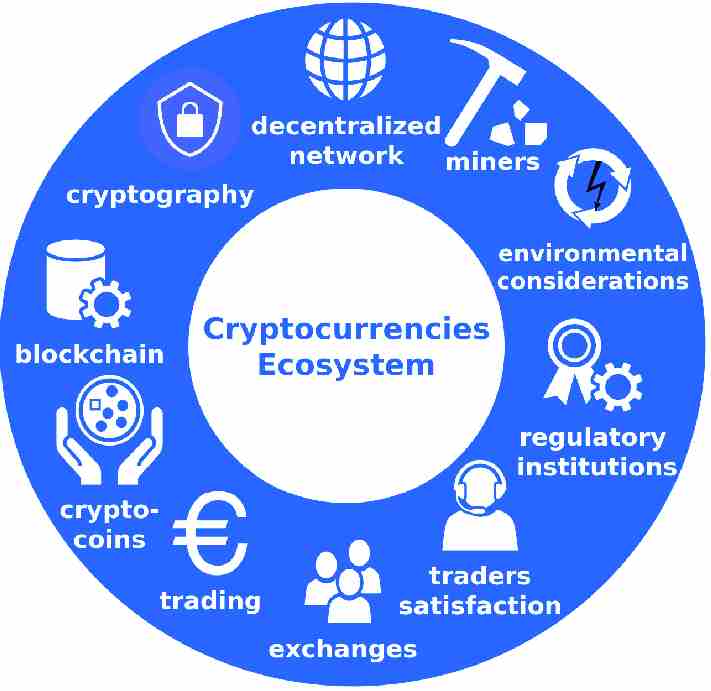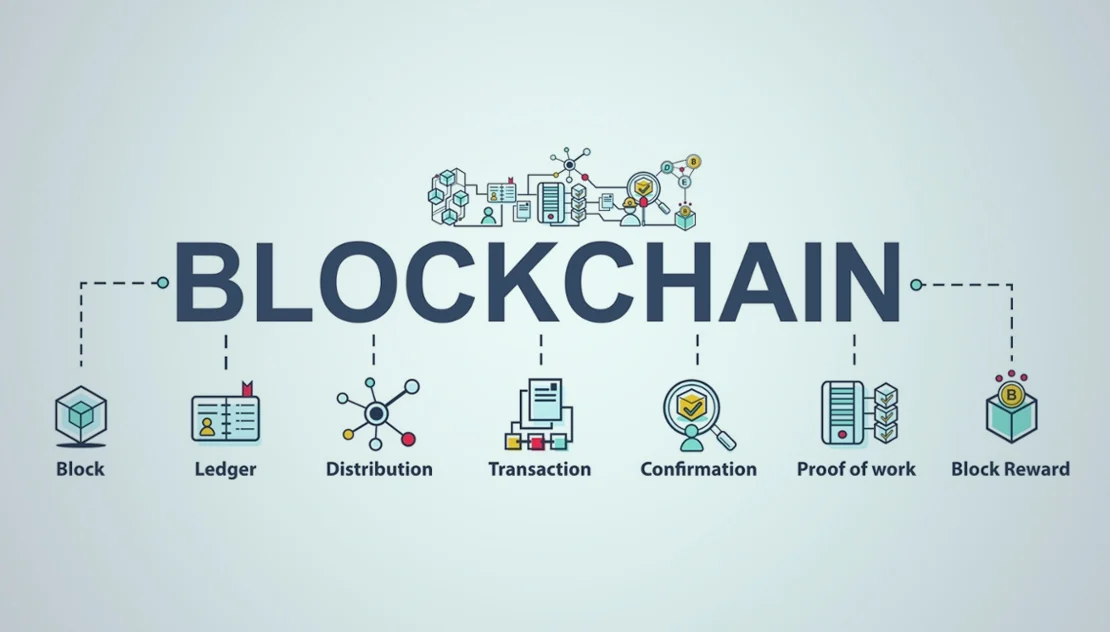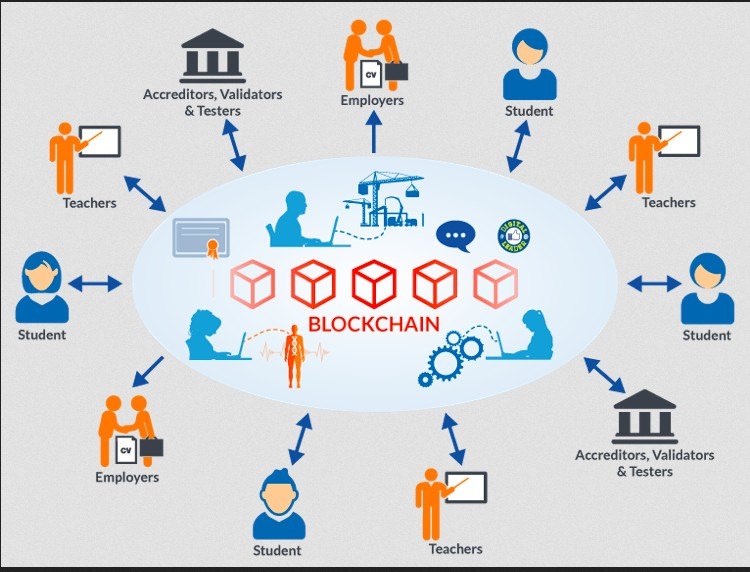Diving headfirst into Introduction to blockchain technology for beginners can feel like a plunge into icy, unknown waters, but fear not! You’re about to get your feet wet in the digital revolution that’s reshaping how we think about and handle our digital deeds. This guide lifts the veil on blockchain: a world where transactions are transparent, yet secure; where trust is not just expected, it’s encoded. Understanding the backbone of this tech will ground you in a space brimming with potential beyond just digital currencies. Stick with me, and you’ll not only master the basics of blockchain, but also explore how it’s carving out exciting new paths in various industries. With this knowledge, you’ll wield the power to look beyond the buzz and see the true substance of digital empowerment. Welcome to your journey through the fast-evolving landscape of blockchain technology. Let’s break it down together.
Understanding the Core Concepts of Blockchain Technology
Explaining the Fundamentals of Blockchain
Imagine a book where you write down everything you spend. Now, imagine if thousands of copies of that book existed around the world. If you wanted to cheat, you’d have to change every single book at the same time. That’s the kind of security blockchain provides.
In simple terms, blockchain is like a chain of digital blocks. Each block has a list of transactions. Once a block fills up with transactions, a new one is created. These blocks are linked together securely, which is why we call it blockchain.
One key thing about blockchain is that it’s decentralized. This means no one person or company owns the system. Instead, many different people run it. This group of people is key to how blockchain works. They are called nodes, and you can think of them as helpers who keep the system safe and fair.
The beauty of blockchain basics for newbies is that everyone can see the transaction history. But, even though everyone can see it, they can’t change old transactions. This is due to blockchain’s security principles. It’s super secure because of something called cryptography. This is a fancy word for a code that’s really hard to crack.
The Significance of Decentralized Ledger Technology
Now let’s talk about decentralized ledger technology. Imagine you and your friends have a list of all the trading cards you own. If someone wants to trade, everyone needs to agree and write it down. This list is checked and updated by you and your friends rather than just one person. That’s what a decentralized ledger does on a much bigger scale.
This ledger isn’t kept in one place but spread out across a whole network of computers. This network is made up of different people we call nodes. They work together to keep the ledger updated and make sure no one is cheating.
One of the best things about blockchain is how it’s used beyond money. Sure, most people know it from Bitcoin. But it’s also used in gaming, to track food from the farm to your table, and to keep private records like house deeds safe.
Blockchain use cases keep growing every day. For example, in medicine, people are looking at how it can safely store patient records. In art, it gives power to artists by proving who made something first.
To sum it up, blockchain is more than just a technology for cryptocurrency. It’s reshaping how we think about trust and ownership in the digital world. It’s all about being open, fair, and secure. That’s why understanding blockchain is so exciting. It’s not just the future; it’s here right now, changing things as we speak!
How Blockchain is Revolutionizing Transactions
The Mechanics of Blockchain Transactions
Blockchain makes trading or sharing info safe, without needing a middle person. It uses a chain of blocks. Each block stores a list of deals. When someone makes a new deal, the network’s computers check it. After the check, the new deal adds to a block. Once full, the block joins the chain.
This chain of blocks creates a ledger. This ledger shows every deal. All can see it but no one can change it. This way, blockchain ensures everything is correct and stays that way.
Enhancing Security with Smart Contracts and Consensus Mechanisms
Blockchain is also about making things better and safer. Smart contracts help with this. They are rules saying how deals should work. If rules are met, deals happen without humans.
Consensus mechanisms also help keep things safe. They are ways that computers on a network agree. They check and confirm every new block before it joins the chain. This process stops cheating.
Proof of Work and Proof of Stake are two ways to reach consensus. Proof of Work makes computers solve tough puzzles to get new blocks. It takes a lot of power. Proof of Stake chooses computers based on how many coins they hold. It uses less power.
These safe ways help people trust the system. They can trade without worry. This trust is why blockchain is getting popular in places beyond money, like keeping records safe.
Beyond Cryptocurrency: Diverse Applications of Blockchain
Exploring Non-Financial Uses of Blockchain Technology
Blockchain is not just for money stuff. It helps in other cool ways, too. Like, keeping records safe and sharing info we can trust. Imagine voting from your phone. Blockchain can do that. It makes sure your vote stays secret but also counts right.
Now, think about your special things at home. You can prove they are really yours. Blockchain helps make papers that nobody can mess with. This keeps your stuff safe and makes sure everyone knows it’s yours. It’s really good for people who make music or art. They can use blockchain to make sure no one else says it’s theirs.
Also, companies can keep an eye on things they sell, from start to finish. This means a store can tell you exactly where your apple came from. Or, if you buy something made by people halfway across the world, blockchain can show you it’s really helping those people.
Introduction to Ethereum and Smart Contract Platforms
Ethereum is like a big computer that nobody owns but everyone can use. It’s a place where you can make deals without a middle guy, like a bank or a store. Let’s say you want to bet with a friend on who will win a game. You can make a smart deal on Ethereum that pays the winner right after the game.
Smart deals mean once you shake on it, it’s a done deal. You can’t change your mind. It works great for sharing money with friends or paying for stuff. It even helps people share their computer space with others who need it.
Ethereum is super important because it started these smart deals. It’s like building blocks for people who want to make new ways to use blockchain. Even though it started after Bitcoin, it’s just as cool.
A fancy word for this is “decentralized apps” or Dapps. It’s like phone apps but without one big boss in charge. This means no one person can stop it or play unfair. It’s like a game with rules that everyone follows, no cheating.
So, that’s it. Blockchain does a lot more than just coins. It helps us be sure who owns what and is fair to everyone. With Ethereum and smart deals, we can do business without worrying. It’s making things safer and more honest for everyone.
By breaking down blockchain into simpler concepts, we aim to light the path for beginners to start their journey into this empowering technology easily. Blockchain has vast potential beyond cryptocurrencies; its ability to secure data, facilitate trustless transactions, and democratize operations across various sectors makes it a promising digital tool for the future.
Navigating the Blockchain Ecosystem
Differences Between Public and Private Blockchains
Understanding blockchain starts with knowing the types. Two main kinds exist: public and private. In a public blockchain, anyone can join and see the data. Think of it like a big, open park. It’s open to all and very secure. Examples are Bitcoin and Ethereum. Private blockchains, on the other hand, are like your backyard. Only invited people can enter. They are smaller and often used by businesses.
Public blockchains use a proof of work or proof of stake to agree on data. This means they are secure but can be slow. They’re great for things like cryptocurrency introduction. They rely on blockchain network nodes to stay honest. Each node has a copy of all transactions.
Private blockchains are fast and use fewer resources. They still use decentralized ledger technology, but they have a boss. This boss decides who can join. They often use blockchain for non-financial uses. Like keeping health records safe or tracking the delivery of goods.
So, what is the main difference between public and private blockchains? It’s who can see and touch the data. In public blockchains, it’s anyone. In private ones, it’s only select people.
Challenges and Opportunities in Blockchain Adoption
Blockchain has many advantages. It’s secure and transparent. It can’t be changed easily, which means less fraud. Businesses see the power of blockchain for records management and more. Yet, blockchain is still young. It faces growth pains like high energy use and questions about rules.
One big issue is scaling. As more people join, how do we keep things fast? Blockchains like Bitcoin have a hard time with this. And there’s the question of privacy. Blockchains are transparent, but people and companies want to keep some data secret.
But, there are good things coming from these challenges. People and groups are looking for solutions. They want to make blockchains that use less energy. They’re also thinking about how to make them fit with laws and keep data private when it needs to be. This opens a door to new jobs and chances to learn blockchain fundamentals.
Blockchain has a lot of uses beyond cash, like in how we vote or track goods from far away. It’s making a trustless system because it does not need us to trust in it. It’s just maths. People see the power of blockchain and are working to make it better. From making it less of a drain on power to fitting it with the world’s laws, blockchain is growing. It’s an exciting time to dive in and learn about blockchain basics for newbies.
In this wide world of blockchain, we find the balance between openness and privacy, between following the rules and creating a new path. It’s a world that’s always evolving, and for those willing to learn and adapt, the opportunities are vast.
We’ve covered a lot about blockchain in this post. From the basics to how it changes the way we do deals, it’s a big deal. This tech means more than just digital cash. It’s shaping a world where information and value move safe and fast, without a middleman. Think about voting from your phone or buying a home online – that’s the power of blockchain.
It’s not just about Bitcoin or money, either. This stuff is revamping all sorts of areas. Ethereum is one example – it lets people use blockchain for all kinds of cool programs, not just for paying for things.
Sure, diving into blockchain can get tricky. There are different types, and it’s not easy to pick the best one. But the pros outweigh the cons. We’re looking at a future where trust is built into the system, not just tacked on. That’s my take as someone who digs into this stuff daily.
As we move forward, keep your eyes on blockchain. It’s more than a trend – it’s a tool that’s changing our world, piece by piece. Stay curious and keep learning!
Q&A :
What is blockchain technology and how does it work?
Blockchain technology is a decentralized digital ledger that records transactions across a network of computers. Each transaction or “block” is verified by multiple participants in the network and is connected to previous transactions, forming a “chain.” This ensures that once information is added, it cannot be altered or deleted, providing a secure and transparent record-keeping system.
Why is blockchain technology important for beginners to understand?
Understanding blockchain technology is important for beginners as it underpins cryptocurrencies like Bitcoin and has potential applications across various industries from finance to supply chain management. Its importance lies in its ability to provide security, transparency, and efficiency, as well as its potential to disrupt traditional business models with decentralized solutions.
Can blockchain technology be used for purposes other than cryptocurrency?
Yes, blockchain technology can be used for a variety of purposes beyond cryptocurrencies. These include supply chain management, securing medical records, voting systems, identity verification, legal contracts (smart contracts), and more, due to its inherent properties of transparency, security, and immutability.
What skills or knowledge do beginners need to start learning about blockchain?
Beginners interested in learning about blockchain technology should start with fundamental concepts such as distributed ledgers, consensus mechanisms, cryptographic hashing, and smart contracts. Basic knowledge of finance and computer science can also be helpful, but many resources and courses are designed to be accessible without prior expertise.
How can beginners get involved with blockchain technology?
Beginners can get involved with blockchain technology by starting with online courses and tutorials, attending industry workshops and conferences, participating in blockchain communities, experimenting with cryptocurrency transactions, and contributing to or starting open-source blockchain projects. These activities can help build a foundational understanding and practical skills in the blockchain space.





